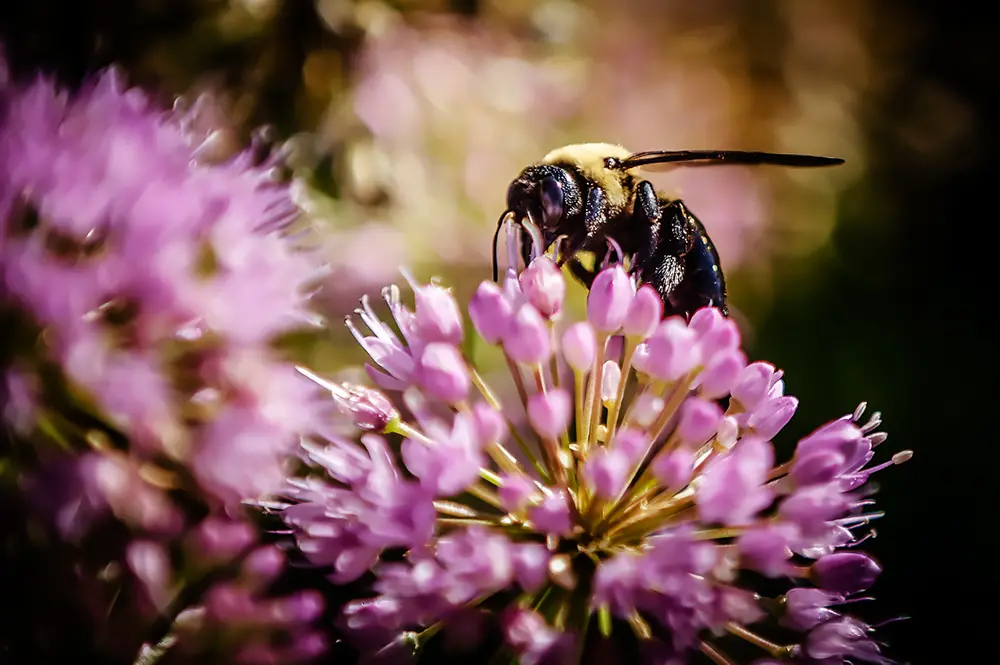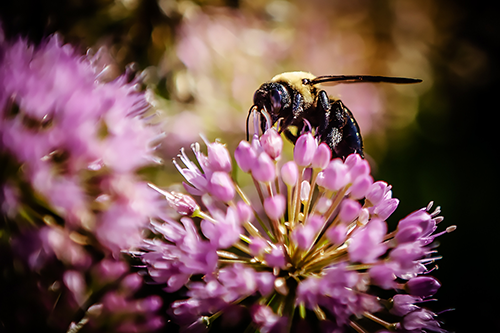

A dramatic decline in bees and other pollinating insects presents a threat to the global food supply, yet it’s getting little attention in mainstream news.
That’s the conclusion of a study from researchers at the University of Illinois Urbana-Champaign, published this week in a special issue of the Proceedings of the National Academy of Sciences. The study was based on a search of nearly 25 million news items from six prominent U.S. and global news sources, among them The New York Times, The Washington Post, and The Associated Press.
The study found “vanishingly low levels of attention to pollinator population topics” over several decades, even compared with what many would consider the limited coverage of climate change.

The study, titled “No buzz for bees,” was led by Scott Althaus, the director of the U of I Cline Center for Advanced Social Research, professor of communication, and Merriam Professor of Political Science, and May Berenbaum, a leading expert on pollinator declines, head of the Department of Entomology, Swanlund Chair, and one of three editors of the PNAS special issue.
The research utilized the Cline Center’s Global News Index, a unique database of millions of news items from thousands of global news sources, published over decades.
“No study like this, and certainly not at this scale, has ever been done before,” said Althaus, also an expert on news coverage and its effects. “There simply has not been academic research on the evolving nature of news coverage given to pollinator declines, despite the importance of that topic within the scientific community.”
The study also analyzed decades of coverage in three English-language wire services based abroad: Agence France Presse, in France; Deutsche Presse Agentur, in Germany; and Xinhua General News Service, in China.
Berenbaum, often described as an “ambassador for insects,” initiated the project out of a desire to gauge public awareness of the pollinator-decline issue. She said she was startled by the results.
“As much as the entomological community is gripped by this impending crisis, it appears the public isn’t paying much attention,” she said. “It’s not that people are indifferent, it’s just that they don’t even know about it.”
And they need to know about it, she said, because “it’s a serious problem for everybody. Insects provide essential ecosystem services that people aren’t aware of and take for granted, and for which we have no substitutes.”
The Cline Center researchers, including study co-authors Jenna Jordan and Dan Shalmon, found that the minimal amount of news coverage on pollinator decline that appeared in the six news outlets was concentrated in The New York Times and The Washington Post, and then most often was relegated to science or other specialty sections. Rarely did pollinator news appear on the front page, Althaus said. “It’s not making it into the mainstream of public affairs news coverage. As we look at wire service reporting in the U.S., we hardly see any coverage of this topic at all.”
That was also true for the three English-language foreign-based wire services they looked at, Althaus said. “It’s really difficult for us to know whether there might be specialty publications within these countries that are taking the issue up. But from what we can see for the broad-based wire service reporting, it is simply not on the radar screens of major news organizations in these other parts of the world.”
Since the vast majority of studies on pollinator decline have been done in Europe and North America, Berenbaum said, “we don’t even know how serious the problem is. Most insect biodiversity, including pollinator diversity, is in the tropics.”
As for the factors contributing to pollinator decline, and insect decline generally, Berenbaum pointed to the introductory article for the special issue of PNAS, “Insect decline in the Anthropocene: Death by a thousand cuts,” of which she is also a co-author. There’s “no nice clean story with one bad guy and an easy solution,” she said, but almost all the causes relate to human activities, from climate change to pollution to agriculture.
On an individual level, Berenbaum said, “we can make a difference in the decisions we make about what flowers we plant in our gardens, which weeds we tolerate in our yards, even how we manage insect pests. A single backyard bug zapper, for instance, can kill tens of thousands of harmless insects over the course of a summer, including many pollinators, while killing barely a thimble-full of mosquitoes.”


